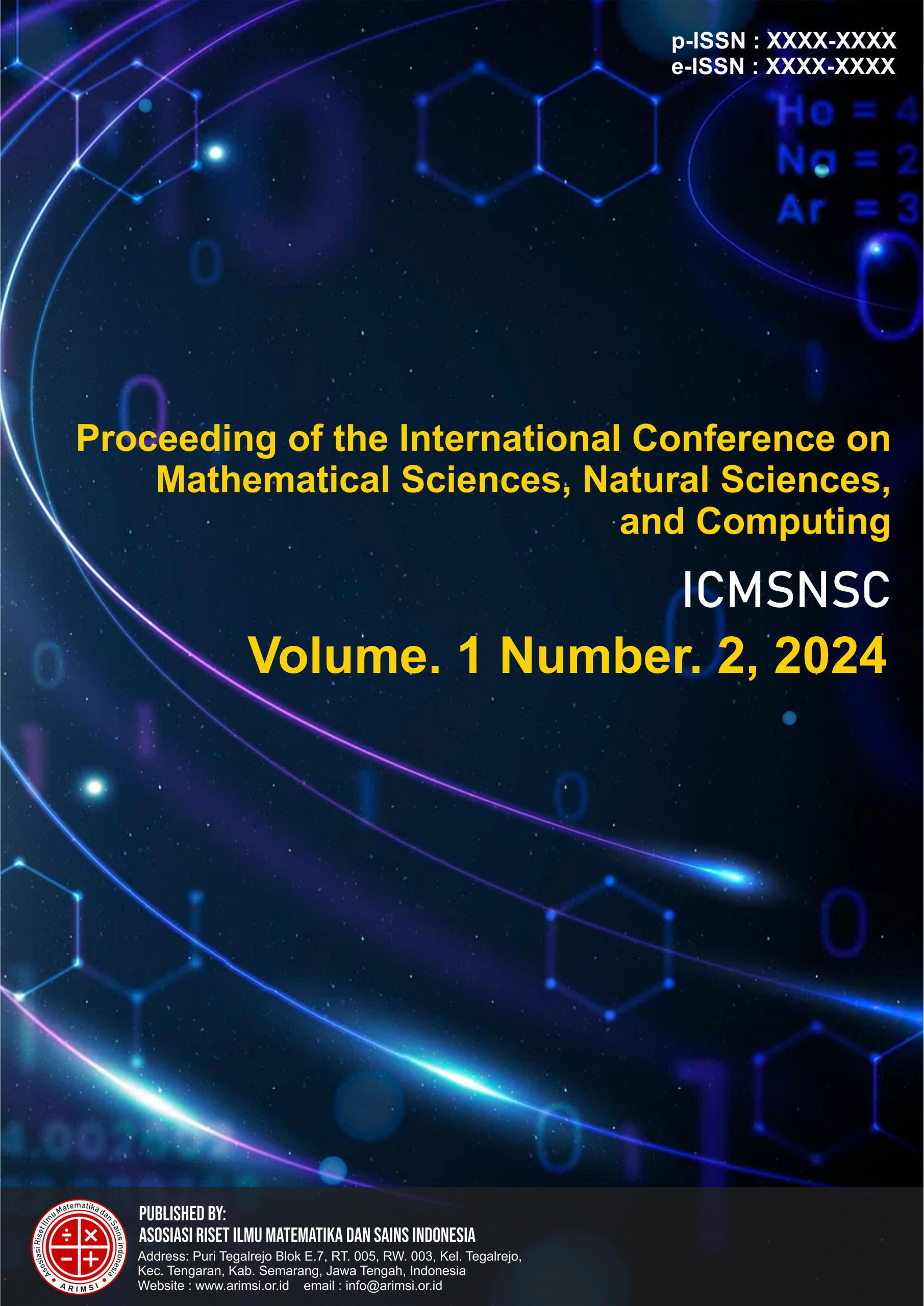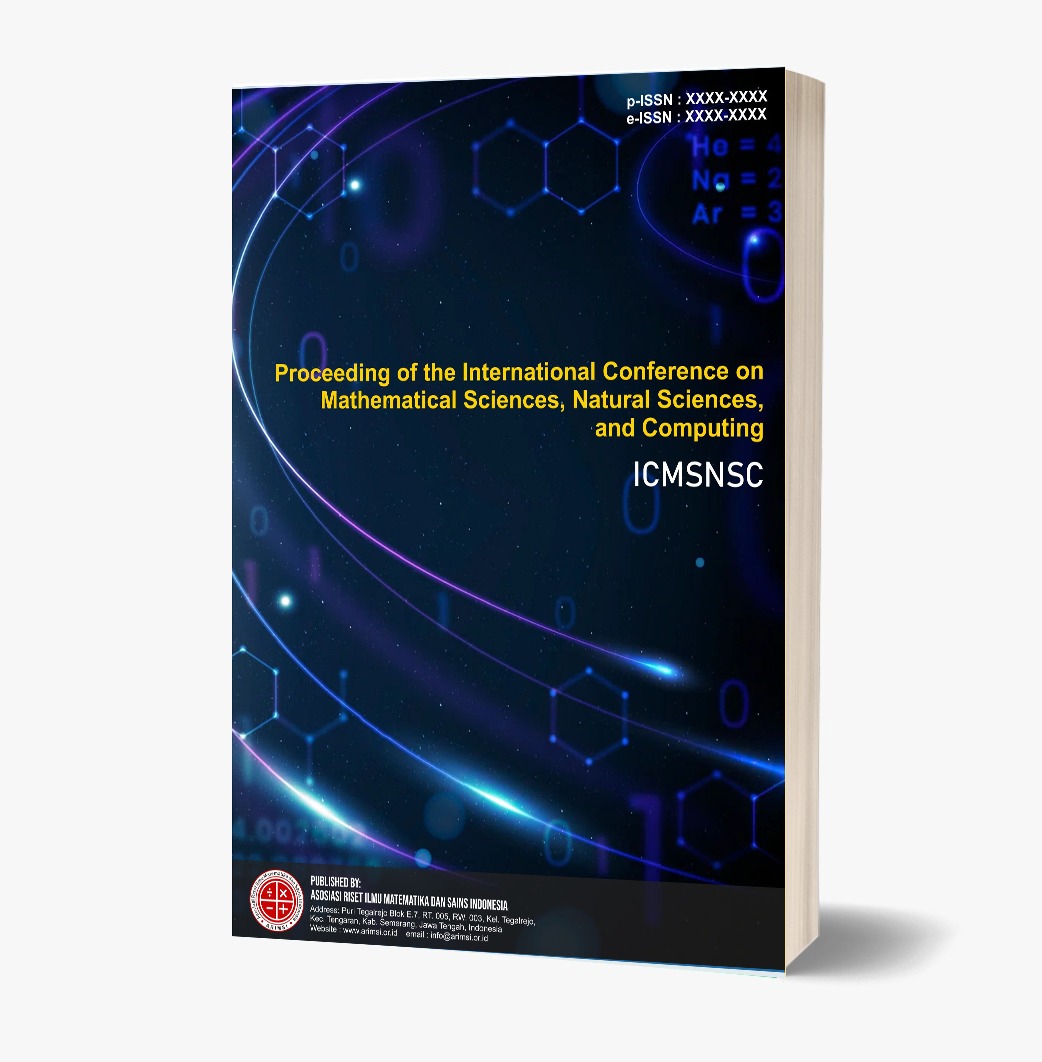Validity of Learning Video Media with an Open-Ended Approach to Mathematics Learning Outcomes
Keywords:
Validity, learning video media, open-ended approach, mathematics learning outcomesAbstract
The purpose of this study was to analyze the validity of the design of the development of learning video media with an open-ended approach to improve the learning outcomes of 6th-grade elementary school students in Mlonggo District. This study applies the research and development method, which is commonly known as R&D (Research and Development). Products development uses the ADDIE model which is structured into five stages including (1) analysis, (2) design, (3) development, implementation, and (5) evaluation. Data collection through filling out the validity questionnaire. This data source includes participation from data validators with an analysis process that includes the accumulation of overall scores. Data analysis uses descriptive qualitative tests. The results of this development research are learning video media with an open-ended approach which is stated to be very feasible by media experts with an average of 90%, and material experts with 92%. So, it can be concluded that learning video media with an open-ended approach is valid and feasible to be used to improve student learning outcomes
References
Aini, B. O., Ayu, K. C., & Siswati, S. (2019). Pengembangan Game Puzzle Sebagai Edugame Berbasis Android Untuk Meningkatkan Kemampuan Berpikir Matematika Siswa SD. JTAM | Jurnal Teori Dan Aplikasi Matematika, 3(1), 74. https://doi.org/10.31764/jtam.v3i1.768
Aprilia, E., Pujiastuti, H., & Rafianti, I. (2021). Development of Mathematics Learning Media Using STEM Approach on Linear Programming MateriaL. Kreano: Jurnal Matematika Kreatif-Inovatif, 12(1), 164–177.
Baburajan, V., de Abreu e Silva, J., & Pereira, F. C. (2022). Open vs closed-ended questions in attitudinal surveys – Comparing, combining, and interpreting using natural language processing. Transportation Research Part C: Emerging Technologies, 137, 103589. https://doi.org/10.1016/J.TRC.2022.103589
Bintoro, H. S., Rahayu, R., & Murti, A. C. (2021). Design of Ethnomathematics Mobile Module To Facilitate Students Mathematical Thinking Ability. AKSIOMA: Jurnal Program Studi Pendidikan Matematika, 10(4), 2362. https://doi.org/10.24127/ajpm.v10i4.4169
Cahyana, U., Paristiowati, M., & Fauziyah, S. (2018). Development of Android-Based Mobile learning media on Atomic Structure and Periodic Table. IOP Conference Series: Materials Science and Engineering, 434(1). https://doi.org/10.1088/1757-899X/434/1/012095
Caron, J., & Markusen, J. R. (2016). The Importance of Video as Learning Media According to Principle of Media Production “VISUALS.” 1, 1–23.
Creswell, J. W. (2014). Research Design: Qualitative, Quantitative, and Mixed Methods Approaches (4th ed.). SAGE.
Fatah, A., Suryadi, D., Sabandar, J., & Turmudi. (2016). Open-Ended Approach: An Effort in Cultivating Students’ Mathematical Creative Thinking Ability and Self-Esteem in Mathematics. Journal on Mathematics Education, 7(1), 9–18.
Gal, H. (2019). When the use of cognitive conflict is ineffective—problematic learning situations in geometry. Educational Studies in Mathematics, 102(2), 239–256. https://doi.org/10.1007/s10649-019-09904-8
Haataja, E., Garcia Moreno-Esteva, E., Salonen, V., Laine, A., Toivanen, M., & Hannula, M. S. (2019). Teacher’s visual attention when scaffolding collaborative mathematical problem solving. Teaching and Teacher Education, 86, 102877. https://doi.org/10.1016/j.tate.2019.102877
Hansen, K., & Świderska, A. (2023). Integrating open- and closed-ended questions on attitudes towards outgroups with different methods of text analysis. Behavior Research Methods, 56(5), 4802–4822. https://doi.org/10.3758/s13428-023-02218-x
Kurniawaty, N. E., Utaminingsih, S., & Sumaji, S. (2024). The Development of LKS with an open-ended approach for learning mastery of mathematical concepts of grade V students. ICCCM Journal of Social Sciences and Humanities, 3(2), 11–16.
Kurt-Birel, G., Deniz, Ş., & Önel, F. (2020). Analysis of primary school teachers’ knowledge of geometry. International Electronic Journal of Elementary Education, 12(4), 303–309. https://doi.org/10.26822/iejee.2020459459
Lam, J. Z., & Yunus, M. M. (2023). Student-Produced Video for Learning: A Systematic Review. Journal of Language Teaching and Research, 14(2), 386–395. https://doi.org/10.17507/jltr.1402.14
Luh Andriyani, N., & Wayan Suniasih, N. (2021). Development of Learning Videos Based on Problem-Solving Characteristics of Animals and Their Habitats Contain in Ipa Subjects on 6th-Grade. Journal of Education Technology, 1(1), 37–47.
Munroe, L. (2015). The Open-Ended Approach Framework. European Journal of Educational Research, volume-5-2(volume4-issuse3.html), 97–104. https://doi.org/10.12973/eu-jer.4.3.97
Ndlovu, Z., & Brijlall, D. (2015). Pre-service teachers’ mental constructions of concepts in matrix algebra. African Journal of Research in Mathematics, Science and Technology Education, 19(2), 156–171. https://doi.org/10.1080/10288457.2015.1028717
Patahuddin, S. M., Rokhmah, S., & Ramful, A. (2020). What does teaching of spatial visualisation skills incur: an exploration through the visualise-predict-check heuristic. Mathematics Education Research Journal, 32(2), 307–329. https://doi.org/10.1007/s13394-020-00321-2
Radita, M. P. M., & Nurfauziah, P. (2022). Desain Aplikasi Mahtematics Mobile Learning Berbasis Android Pada Materi Teorema Phytagoras. JPMI (Jurnal Pembelajaran Matematika Inovatif), 5(2), 519. https://doi.org/10.22460/jpmi.v5i2.9509
Ruf, A., Zahn, C., Roos, A. L., & Opwis, K. (2023). How do enhanced videos support generative learning and conceptual understanding in individuals and groups? Educational Technology Research and Development, 71(6), 2243–2269. https://doi.org/10.1007/s11423-023-10275-4
Saputra, M., Abidin, T. F., Ansari, B. I., & Hidayat, M. (2018). The feasibility of an Android-based pocketbook as mathematics learning media in senior high school. Journal of Physics: Conference Series, 1088. https://doi.org/10.1088/1742-6596/1088/1/012056
Sarwanto, Fajari, L. E. W., & Chumdari. (2020). Open-Ended Questions to Assess Critical-Thinking Skills in Indonesian Elementary School. International Journal of Instruction, 14(1), 615–630. https://doi.org/10.29333/IJI.2021.14137A
Serevina, V., Sunaryo, Raihanati, Astra, I. M., & Sari, I. J. (2018). Development of E-Module Based on Problem Based Learning (PBL) on Heat and Temperature to Improve Student’s Science Process Skill. TOJET: The Turkish Online Journal of Educational Technology –, 17(3), 26–36.
Setyaningrum, F., & Siswantari, H. (2020). Visual-Spatial and Intrapersonal Intelligence in Learning of Rampak Kendang Art for Elementary School Students. International Journal of Creative and Arts Studies, 7(1), 49–60. https://doi.org/10.24821/ijcas.v7i1.4163
Sistadewi, K., & Agustika, G. N. S. (2022). Pengembangan Video Pembelajaran Matematika Berbasis Open Ended Materi Pecahan Senilai Untuk Kelas IV Di SD No.1 Mengwi. Pendidikan Dan Konseling, 105(2), 79.
Sukma, F. M., & Ratnaningsih, A. (2022). Development of Learning Videos Based on Constructivistic Learning Theory on the Theme of 8 Areas I Live in Grade IV Elementary School grow an idea to solve problems . According to Sudarsana ( 2018 ), Constructivism is when students must find themselves an. Edunesia: Jurnal Ilmiah Pendidikan, 3(2), 157–167.
Surahmadi, B. (2016). Pengaruh Media Pembelajaran Virtual Berbasis Quipper School Untuk Meningkatkan Motivasi Belajar Dan Hasil Belajar Peserta Didik Kelas VIII SMP N 1 Temanggung. USEJ - Unnes Science Education Journal, 5(1), 1123–1127. https://doi.org/10.15294/usej.v5i1.9645
Suratmi, S., Laihat, L., & Santri, D. J. (2018). Development of Teaching Materials Based on Local Excellences of South Sumatera for Science Learning in Elementary School. Jurnal Penelitian Dan Pembelajaran IPA, 4(1), 35. https://doi.org/10.30870/jppi.v4i1.3336
Tani, M., Manuguerra, M., & Khan, S. (2022). Can videos affect learning outcomes? Evidence from an actual learning environment. Educational Technology Research and Development, 70(5), 1675–1693. https://doi.org/10.1007/s11423-022-10147-3
Van Der Stappen, A., Liu, Y., Xu, J., Yu, X., Li, J., & Van Der Spek, E. D. (2019). MathBuilder: A collaborative AR math game for elementary school students. CHI PLAY 2019 - Extended Abstracts of the Annual Symposium on Computer-Human Interaction in Play, 731–738. https://doi.org/10.1145/3341215.3356295
Xu, F. (2019). Towards a Rational Constructivist Theory of Cognitive Development. Psychological Review, 126(6), 841–864. https://doi.org/10.1037/rev0000153
Yuda, M. (2011). Effectiveness of digital educational materials for developing spatial thinking of elementary school students. Procedia - Social and Behavioral Sciences, 21, 116–119. https://doi.org/10.1016/j.sbspro.2011.07.045
Zolkwer, M. B., Hidalgo, R., & Singer, B. F. (2023). Making educational videos more engaging and enjoyable for all ages: an exploratory study on the influence of embedded questions. International Journal of Lifelong Education, 42(3), 283–297. https://doi.org/10.1080/02601370.2023.2196449
Zuliana, E., Oktavianti, I., Ratnasari, Y., & Bintoro, H. S. (2020). Design and application of marionette tangram: An educational teaching media for mathematics and social science learning process in elementary schools. Universal Journal of Educational Research, 8(3), 931–935. https://doi.org/10.13189/ujer.2020.080326






